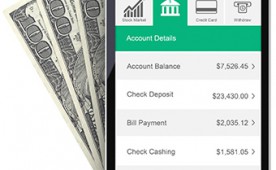FinTech, Cryptocurrency & Electronic Payments Market Research
Competitive Intelligence, Business Analysis, Forecasts, Market Size, Trends, Companies, Statistics
Available Data Services: Custom Research Projects, Database Subsription or PDF eBooks
PLUNKETT PROVIDES IN-DEPTH STATISTICS TABLES COVERING THE FOLLOWING INDUSTRY TOPICS:
Top Companies Profiled
The following is a partial listing for this industry. As a subscriber, you will have access to the leading companies and top growth companies. This includes publicly-held, private, subsidiary and joint venture companies, on a global basis as well as in the U.S.
Key Findings:
- Plunkett Research analyzes the top trends changing the industry, and provides in-depth industry statistics. In addition, this publication profiles the top 235 companies in the FinTech, Cryptocurrency & Electronic Payments Industry.
Available Formats:
- Printed Almanac: ISBN 978-1-62831-632-2 (Available)
- E-book: ISBN 978-1-62831-957-6 (Available)
- Plunkett Research Online (Subscribers)
Key Features Include:
- Industry trends analysis, market data and competitive intelligence
- Market forecasts and Industry Statistics
- Industry Associations and Professional Societies List
- In-Depth Profiles of hundreds of leading companies
- Industry Glossary
Pages: 348
Statistical Tables Provided: 7
Companies Profiled: 244
Geographic Focus: Global
Price: $379.99
Key Questions Answered Include:
- How is the industry evolving?
- How is the industry being shaped by new technologies?
- How is demand growing in emerging markets and mature economies?
- What is the size of the market now and in the future?
- What are the financial results of the leading companies?
- What are the names and titles of top executives?
- What are the top companies and what are their revenues?
This feature-rich book covers competitive intelligence, market research and business analysis—everything you need to know about the FinTech, Cryptocurrency & Electronic Payments business including:
- Introduction to the FinTech, Cryptocurrency & Electronic Payments Industry
- Cryptocurrencies and Blockchain Explained
- The Difference Between Cryptocurrencies and Stable Coins/National Treasuries Consider Issuing Stable Digital Currencies
- BNPL (Buy Now Pay Later) Options Gain Payments Market Share
- Digital Wallets Gain Payments Market Share
- The SuperApp Begins to Develop in FinTech
- Real Time Payments (RTP)/Instant Payments to Grow
- Neobanks/Virtual Banks Explained/Top Competitors
- A Brief History of Artificial Intelligence (AI) and the State of the Industry Today
- Voice, Face & Image Recognition Change the Wireless World, Enhanced Through Artificial Intelligence (AI)
- Insurance Underwriting Uses Artificial Intelligence (AI)/Policy Holders Allow Their Habits to Be Tracked for Lower Insurance Rates
- Robotic Process Automation (RPA) Is Replacing Human Workers
- Digital Assistants Include Amazon’s Echo and Google’s Home/Alexa and Similar Software Power Third-Party Developers
- Growth in Big Data Supported by Expansion of Cloud Computing and Predictive Analytics
- Artificial Intelligence (AI) Powers Hedge Fund Investment Strategies
- Banks and Mobile Apps Vie for Previously Underserved Markets, Including Hispanics
- China Sees Growth in Online Payments, Banking and Lending/Alipay Soars
- The Internet, Smartphones and ATMs Replace Bank Branches and Tellers
- Smartphones and Financial Technology (FinTech) Enable New Mobile Payment Methods
- Peer-to-Peer (P2P) Payment Systems, such as Zelle and Venmo, Soar in Popularity
- In Emerging Nations, mChek and M-PESA Enable Remote Banking via Smartphone
- Online Competition Changes the Mortgage Industry
- Open Banking May Revolutionize the World of Banking and Finance
- The Future of Banking, Credit Cards, Mobile Payments and Mortgages
FinTech, Cryptocurrency & Electronic Payments Industry Statistics
- FinTech, Cryptocurrency & Electronic Payments Industry Statistics and Market Size Overview
- Artificial Intelligence Industry Statistics and Market Size Overview
- Investment & Securities Industry Statistics and Market Size Overview
- U.S. Banking, Mortgages & Credit Industry Statistics and Market Size Overview
- Global Credit Card Industry Statistics and Market Size Overview
- FDIC Insured Institution Statistics: 2nd Quarter 2021
- Employment in the Banking Industry, U.S.: 2015-July 2021
Companies Mentioned Include:
- Apple Inc
- Microsoft Corporation
- Visa Inc
- Fidelity Investments Inc
- Intuit Inc
- Stripe Inc
- TD Ameritrade Holding Corporation
- Experian plc
- KakaoPay Corp
- IHS Markit Ltd
Organizations that have used our research and products



















